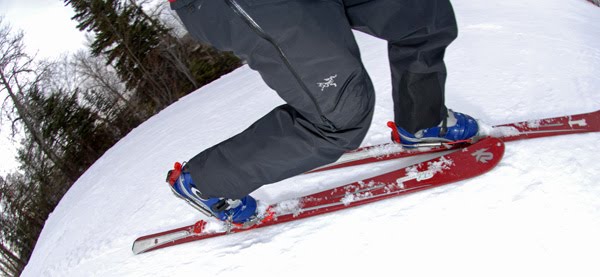
None of the hundreds of bikes in the newly renovated space at Revolution Cycle was built for me.
That’s because Revolution partnered with bike builder Specialized Canada to create the world’s first women’s concept store. Almost half their space is dedicated to women riders, which reflects the consumer base, says manager Ben Fedoruk.
Most have researched on the Internet or in magazines before they come in for a test ride, he says — and they know what they need.
“Girls aren’t the same. When they get on a bike that’s not built for them, they’re not happy; they’re not comfortable.
“This is women designing bikes for women.”
These are not just unisex frames painted in pretty colours. They’re designed from the wheels up with input from riders like Darcy Turenne. The Norco Bikes team rider was in Edmonton recently to sign autographs at United Cycle and show off the Vixa, the latest freeride unit she helped design.
A native of Comox, B.C., and former member of the national downhill mountain bike team, Turenne, 26, also hosted the television program The Ride Guide on the Outdoor Life Network. As an ambassador for Norco Bikes, she now spends almost 300 days a year on the road and in the saddle, so bike fit is really important.
“I wanted a bike that would suit my riding style. I basically just told them (Norco) what I wanted to use it for and what I wanted it to feel like, and the engineers came up with a mock draft of the geometry.”
According to Turenne, the Vixa has a shorter cockpit, with less reach from the seat to the handlebars, so it’s more comfortable. It’s also shorter in height and lighter than a unisex model, so it’s more nimble.
This is an exciting time for female cyclists, Turenne says. They’re attracting more media attention and corporate sponsorships, and all of the big bike companies are introducing women-specific lines.
“I think the support women are getting in the cycling industry is definitely attracting more female cyclists because there is product out there for them; they don’t feel excluded.
“Girls like to ride with other girls; it’s less intimidating. And having that product out there for us to use is really great, really good for the sport.”
Back at Revolution Cycle, Fedoruk says he’s seeing a lot of women who want to upgrade their wheels to more expensive models.
“They start out with maybe an $800 bike, but within two years, all of a sudden they’re bike junkies, and they read magazines all the time and they’re buying $4,000 bikes.”



